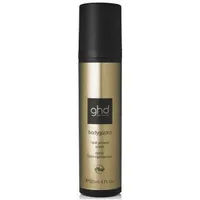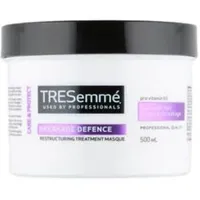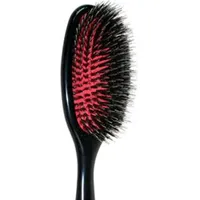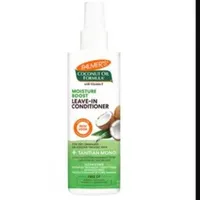Best hair tips for healthy hair: 33 professional tips to care, grow and style your locks
Is your hair feeling and looking dull and lifeless? Check out our top 50 hair tips to transform your tresses into healthy, glossy hair.


Is your hair feeling and looking dull and lifeless? Check out our top 50 hair tips for healthy hair to transform your tresses.
From styling tips and 5-minute hacks to investing in the best hair dryers or products for frizzy hair, we’ve asked the hair gurus to reveal their hair secrets and tricks of the trade, along with the common mistakes you could be making which ruin your hair’s condition. Whether you’ve got a bob hairstyle, short hair, long hair, fine or thick hair, these insider expert tips will have you covered. And the good news is we’re not talking all expensive products, pricey treatments or fancy gadgets either - with most of these ideas quick and simple enough to fit into your existing routine.
As Stéphane Ferreira, Senior Colourist at Live True London tells us: "Small steps to healthier hair could include using silk pillow cases and hair ties to limit snagging and breakage. Plus good quality hair products that are formulated for your hair type."
50 best hair tips for healthy hair:
1. Regular trims
It's common knowledge that regular trims keep your hair healthy and allow it to grow quicker. Depending on the thickness of your hair you should try and fit in a visit to the hairdressers every 6-to-8 weeks. Worried about the expense? You could always try cutting your hair at home.
Tina Hollis, colourist, Wella Master Colour Expert and director at T2 Hair & Beauty, says: "We’re so desperate to keep our long locks that we avoid the scissors, but this in itself is damaging. In my salon we do the 'invisible trim' and it’s now a thing! In actual fact we are just taking off the tips, but by doing this we are helping to keep the structure of the hair more sound which means the hair stays longer and stronger."
https://www.youtube.com/watch?v=hI0KiAK_HrQ
2. Take care of your body
Taking care of your hair starts by taking care of your body, so prioritise your diet. The Institute of Trichologists expert Eleanore Richardson Msci MIT, Consultant Trichologist at Fulham Scalp & Hair Clinic says: "Nourish your body and your body will nourish your hair. Hair is the body's last priority to produce, so make sure you are getting in all your key nutrients including protein to ensure the body has enough to spend on your strands."
Eleanore isn't wrong either, with one study published in the Journal of Cosmetic Dermatology showing that popping a protein supplement helped reduce hair loss and boosted growth in men and women who were losing their locks. Incorporate foods like eggs, meat, fish, nuts, cheese, pulses and good-for-you greek yoghurt, which are all protein rich.
3. A proper wash
You might be wondering how this can be one of our tips for healthy hair. But you’d be surprised at how many people don’t know how to wash their hair properly.
When shampooing your hair, make sure you massage your scalp using the tips of your fingers in circular motions at least five times to give it a full cleanse – and make sure your rinse your hair through. Take time on it and you’ll really notice the difference. In addition to getting a good clean is learning how often you should wash your hair too. Short answer: It depends on your hair type, length, age, and ethnicity.
4. Prioritise scalp health
Scalp health is as easy as 1,2,3. "Avoid ingredients ending in 'cones' (silicons, dimethicones, trimethicones)," Zoe Wasfy, co-founder of vegan and sustainable haircare brand Wild Science Lab.
"These are added to products to make hair feel moisturised and softer. However, they are molecularly heavy and block the scalp’s breathing and clog the follicles, leading to breakage, dryness, and in extreme cases, hair loss.
5. Comb rather than brush
Comb your hair when it’s wet instead of using a hairbrush. Combs are gentler on hair, which can help to prevent split ends. There are plenty of cheap detangling combs out there. And if your hair is particularly knotty, try a detangling spray before combing for extra soft locks.
Effortlessly detangle wet or dry hair, with this wide-toothed comb. The perfect tool for distributing product through your hair with ease and preventing split ends.
6. Friendly shampoo
Just like the rest of our skin, our scalps also age. Your scalp provides a base for hair to grow and provides the nutrition it needs. Essentially, it is the soil from which the hair grows. Frequent shampooing with harsh cleaners really ages the scalp. So try to find a mild shampoo that is sodium and sulphate free to slow down this process as much as possible.
pH is another factor to consider with your shampoo choice. Researchers of one Brazilian study found that shampoo with a pH level below 5.5 reduces frizz and friction between hair fibres - equalling less damage overall. On the other hand shampoos with a high pH than this "may increase the negative electrical charge of the hair fiber surface and, therefore, increase friction between the fibers; this may lead to cuticle damage and fiber breakage." To find your shampoo's pH, purchase some pH testing strips, dip one in and carry outt the classic litmus paper test.
7. Invest in a good conditioner
One of the best hair tips for healthy hair is condition, condition, condition. Your humble conditioner is a miracle worker when it comes to hair. It helps soften tresses, make it easier to manage and works to protect against damage.
Eleanore Richardson Msci MIT, Consultant Trichologist at Fulham Scalp & Hair Clinic, agrees: "A well-designed conditioner will reinforce the outer cuticle of the hair shaft and provide some resilience to the everyday wear and tear we endure. I recommend our Peppermint Stimulating Mask."
8. Greasy roots
Greasy hair can be caused by conditioner being applied to the roots, touching the hair frequently or simply just by the over production of oil from the scalp. Try shampooing the hair with cooler water and massage your scalp softly to reduce the amount of oil being produced, and only apply conditioner to the ends.
9. Take a break from heat and colour
It's no secret that frequent heat and colour damages your hair. "Both dry out the hair shaft, leaving it porous and more likely to snap and split which means dull, weak hair in need of a good trim," explains Hair Trichologist Eleanore Richardson Msci MIT. "When it comes to heat and colour, less really is more."
Scientists at Hiroshima University also found that our go-to styling tools like curling wands and straighteners fry the keratin protein found in our hair - by as much as 85%. Killing the keratin is what causes our tresses to trun dry and brittle. So limit use and seek out a heat protectant spray when using.
ghd's Bodyguard boasts 2 levels of heat protection and is essential when heat styling. It's a lightweight, shielding buy that doesn’t feel greasy or a faff to use. Simply spritz through hair before picking up your hairdryer or straighteners.
10. Air dry
This is one of those tips for healthy hair that's a no brainer really. Ditch the hair dryer and subsequent heat damage by letting your locks dry au natural.
"Blow drying tools rapidly suck moisture out of hair strands, leaving ends often dry, brittle and fried," says Jonathan Andrew, 'Hair Whisperer' and Fudge Professional Global Ambassador. "Try to air dry your hair if at all possible and aim to get more longevity out of your style by experimenting with buns, plaits or incorporating hair accessories."
11. Sleeping beauty
One on our more simple tips for healthy hair. Just ensure your hair is 100 per cent dry before you go to bed.
Whilst asleep, your head is in direct contact with the pillow for 6-8 hours and so if it’s wet, water can’t evaporate. The result is that your scalp over-compensates by creating extra sebum. So - in essence - hair gets oilier quicker if you go to bed with it wet.
12. Notice how much you shed
We regularly check in and listen to our body when something doesn't seem right. And the same thing applies to our manes too. An increase in hair loss is one factor in particular you should look out for, says Trichologist Eleanore Richardson Msci MIT:
"Everyone sheds hair on a daily basis, but if you are noticing more shedding than normal it may be a sign of an underlying health condition or nutritional deficiency. Get it checked out early on with a qualified Trichologist who can assess your hair and scalp health."
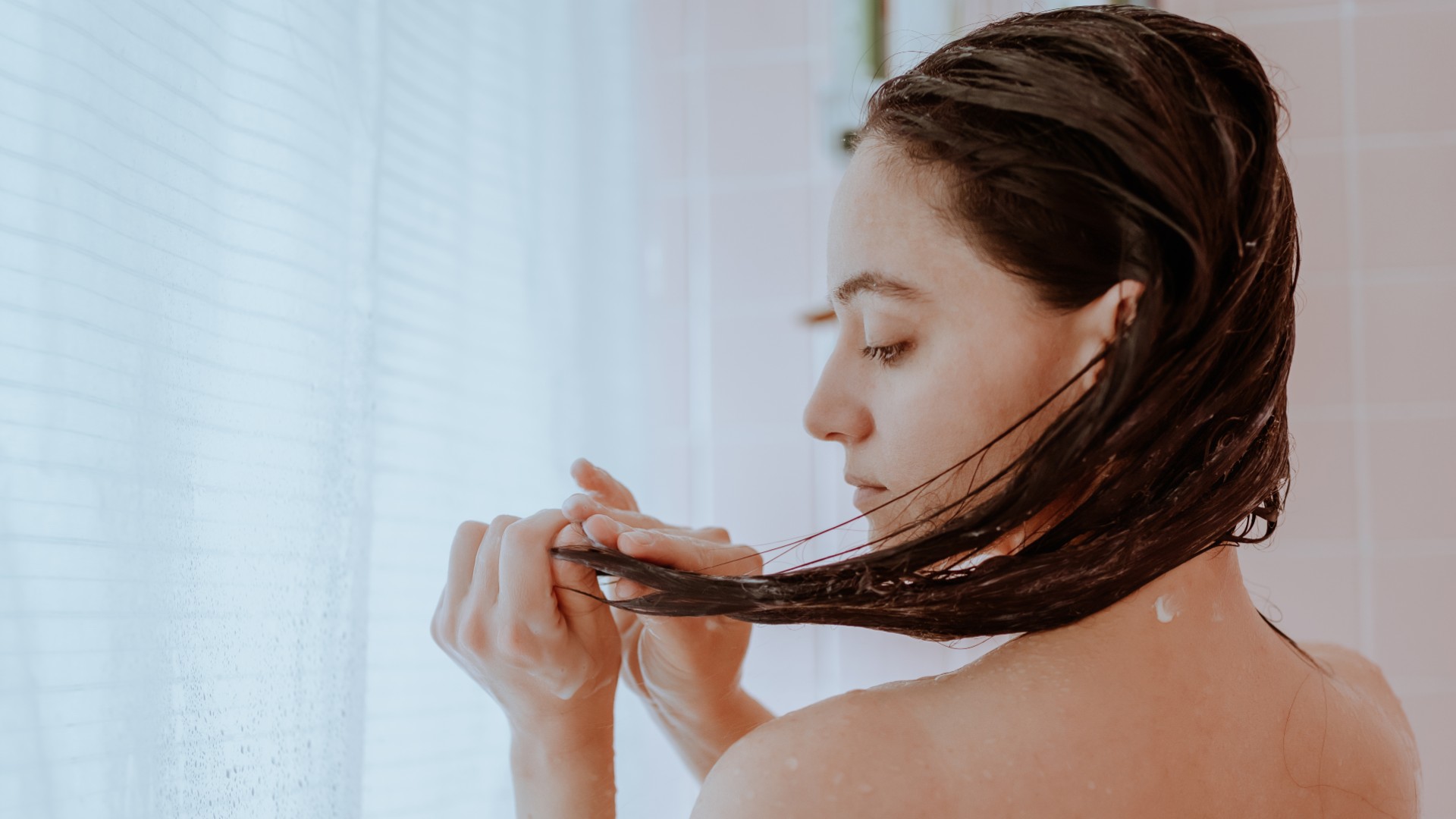
13. Use dry shampoo – but sparingly
We’re big lovers of dry shampoo in the GoodTo offices. It’s great for absorbing grease and adding volume to lacklustre roots. Especially when you're in a rush - but be careful not to overdo it. Heavy dependence on Batiste et al can give you a scary array of scalp issues, including dandruff and blocked pores.
According to celebrity stylist Benjamin Mohapi, overspraying can even end up causing scalp pimples or, in the worst case scenario, cysts. But don’t panic – we’re not saying you should give up your instant refresh habit altogether. Just be aware of how often you’re spritzing and opt for a ‘less is more’ approach. Top tip: Use a build-up removal shampoo on a regular basis to keep your scalp clean and healthy.
14. Make sure you prime
One of the best tips for healthy hair. Most of us are accustomed to using a primer on our face before applying our daily make-up. And the same should be done for those seeking sleek locks - says Fudge Professional's Jonathan Andrew.
"A primer will enable your hair to be in its best condition prior to styling," he tells us. "There’s a great tip us hairdressers share to show how a primer or heat protector works – take a slice of bread, apply the primer/heat protector to one side and then pop it in the toaster. You’ll then see when it pops out – one side will be toasted and the side with the product will look the same."
After you tried to trick, it's important you apply your primer properly. "The most common mistakes are that people tend to only apply the primer to the top surface," adds Jonathan. "If you’re using a cream/gel, then apply to your hands first and really coat them again – getting into the front, back and along the fingers. Then start from the underneath upwards and the from the top downwards for even distribution. If it’s a spray, make sure you’re really moving the hair around and running your hands through for an internal application."
15. Pre-shampoo treatment
Hair oil can be used as a pre-shampoo conditioning treatment to give your scalp and hair extra nourishment before washing. Simply massage it into your hair from root to tip and leave on for at least 20 minutes before shampooing hair as normal. This is a great hair tip for the colder months, when windy weather and central heating can dry hair out.
16. Condition oily tresses
If you suffer with oily hair, shampoo your hair daily and make sure to use a weekly treatment mask or deep conditioner. This is because despite popular assumption, it won’t make your tresses greasier. In fact, it will help strengthen and nourish your hair, allowing it to grow faster and look healthier.
Professional performance formula enriched with vitamins restructures hair, protecting it from split ends and breakage. Ideal for those who regularly use heat styling tools. Hair is left silky soft, shiny and tangle free.
17. Lighter shades
It’s important to remember that the more ‘grey’ coverage you have, the lighter your overall shade will appear. So be careful when choosing a colour to keep this in mind.
"Start off with a tone one to two shades darker than how you would like your overall finish to look," says John Stedman, a hairdresser with over 40 years experience. "You’ll be amazed at how light it comes up."
18. Walnut Oil dye
One of the best tips for healthy hair is to swap your chemical boxed dye job for a natural alternative. If you have brown hair, you can stain it with walnut oil rather than artificially dying it. This will not only make your hair look super shiny and healthy (thanks to the conditioning oil), but will also give you a vibrant colour. You'll also find you can pick it up for under a tenner in most health stores too. So it's a win for your wallet too.
Whatever your colour it's good to incorporate colour protection products frequently into your routine. This will help keep your colour for a prolonged period.
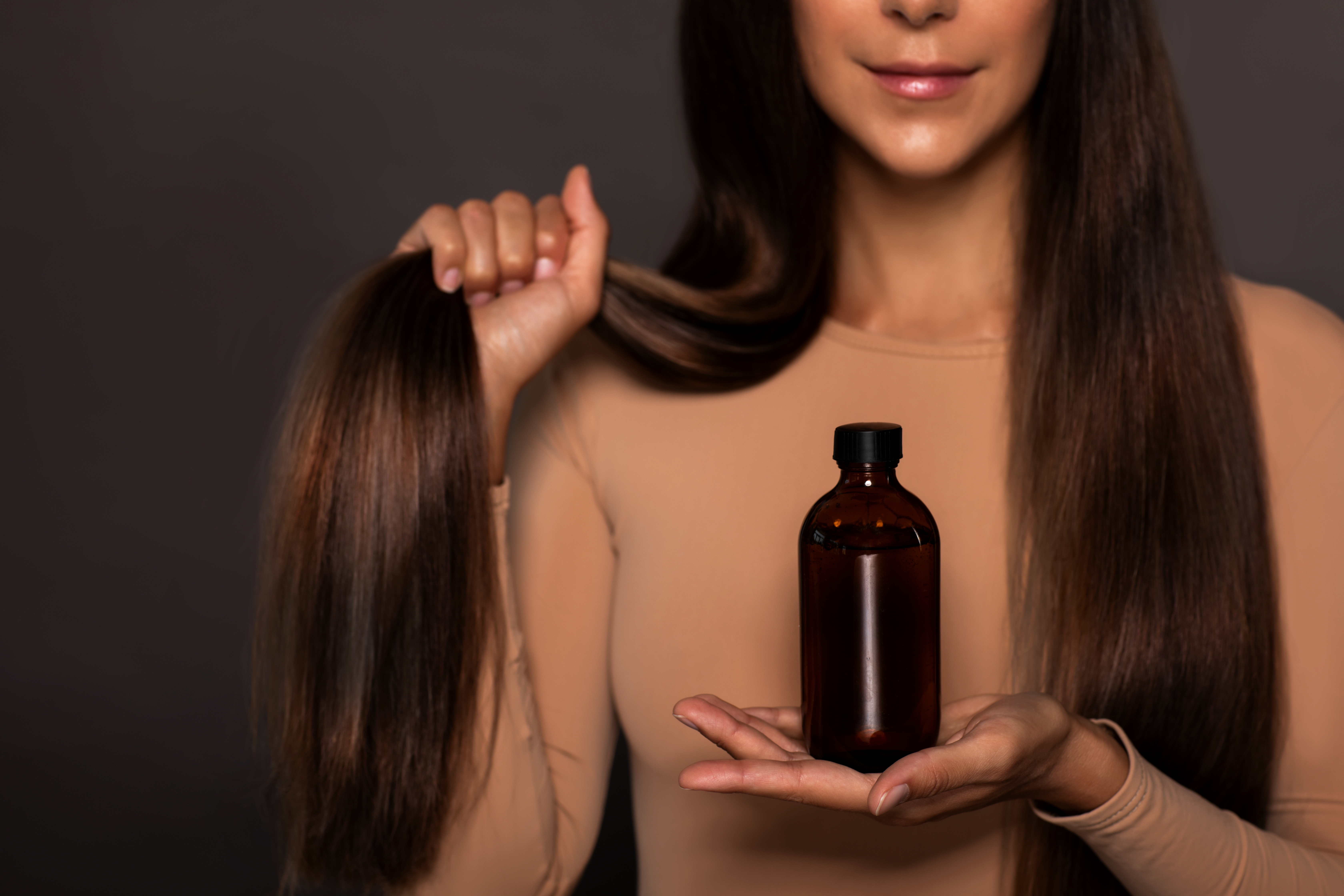
19. Ketchup for blondes
Chances are if you have blonde hair or highlights, you already know that it can turn green when your hair mixes with chlorine. But there's a simple - albeit weird - tip that can work wonders. And allow you to enjoy that holiday dip.
To combat the green, wash your peroxide locks with tomato ketchup after getting out of the swimming pool. The red tones and vinegar help to neutralise the green.
20. Homemade hair mask
- 1 banana
- 1 egg
- 1 avocado
- 2 tbsp honey
- 3 tbsp extra virgin olive oil
Revive your hair with a homemade hair mask using some basic household ingredients. Mix the five ingredients together well. Then apply from root to tip and leave on for at least 30 minutes. You should feel the benefits straight away.
21. Bristle brushes are best
Craving smooth, sleek hair? One of our top tips for healthy hair is always use a real bristle brush. It helps reduce split ends as bristle brushes are softer on hair. Only brush your hair twice a day though, as over brushing can leave it feeling greasy and lank.
Mason & Pearson are famous for their high quality bristle brushes, but they do come at a price. If you are budget conscious then consider LOOKFANTASTIC. They have some cheaper options that still deliver great results.
An innovative hairbrush that helps to gently detangle whilst creating a brilliant shine. Set in an air-cushioned pad for ultimate comfort, the brush uses a combination of natural and nylon bristles to smooth the hair cuticle, reduce frizz and create a sleek, polished finish.
22. Volumise your blow dry
Hair looking and feeling a little flat? Hairdresser John Stedman shares his quick hack for adding va-va voom.
"To create more volume while you blow dry your hair, lift sections of hair towards the ceiling and direct the heat to your roots," h tells GoodTo. "This dries the roots in an upright, lifted position.
Tipping your head upside down while blow drying can also give added volume, he adds. Just don’t forget to finish with a spritz of hairspray to help lock that volume in.
23. Roller curls
We all know ditching heat is a smart move for promoting healthy hair. But how else can you create an effortless curl look without the warm?
For natural looking waves and curls, put hair in velcro rollers straight after lightly towel-drying freshly washed hair. Leave your hair to air dry in the rollers. Then take out and use your fingers to smooth out hair. And voilà - damage free curls.
https://www.youtube.com/watch?v=f4G1zJ_9u2g
24. Tackling the bob
It is essential that you get the right length bob for your face, as a bob can be any length from the jaw to the shoulder. If you have a round face, ensure your bob is longer than jaw length otherwise it will accentuate the roundness of your face. If you have a slightly longer face, don’t have the bob too long or it will make your face look longer.
25. Beach hair
If you don’t fancy a swim to create the look, simply spritz on lots of leave-in conditioner and then braid your hair into a plait while you’re out and about in the sun. In doing so, you will not only keep it off your face for maximum tanning exposure, but you will also be minimising the amount of hair on show to the sun.
In the evening you can take the braid out and voilà - you have a wavy, tousled look for your evening cocktails and dinner.
Palmer's Coconut Oil Leave-In Conditioner instantly detangles, putting an end to tugging and pulling at knotty hair. With a few sprays hair has instant slip and silkiness for easier comb-through and styling.
26. Condition before the beach
Dampen you hair with water and coat it with conditioner before going in the sea or the swimming pool. This will not only keep knots at bay and make it easier to style afterwards, but it’ll protect your tresses and stop the salt from drying your hair out. The fresh water minimises the amount of salt water or chlorine your hair can absorb. Thus creating an invisible protective layer.
27. Powers of olive oil
One of those tips for healthy hair that requires a trip to the kitchen cupboard. Using olive oil on frizz-prone hair not only improves its appearance, but it also improves the elasticity and strengthens it, too. Use it sparingly though, especially on fine hair, as it’s very strong and can leave hair feeling greasy if used too liberally.
28. Dry tresses
While damaged hair requires a dose of protein, dry hair on the other hand simply requires moisture - and lots of it! Dry hair is generally caused by over blow-drying and styling the hair, especially with heat. Use moisture retaining styling products to reduce the drying out effect.
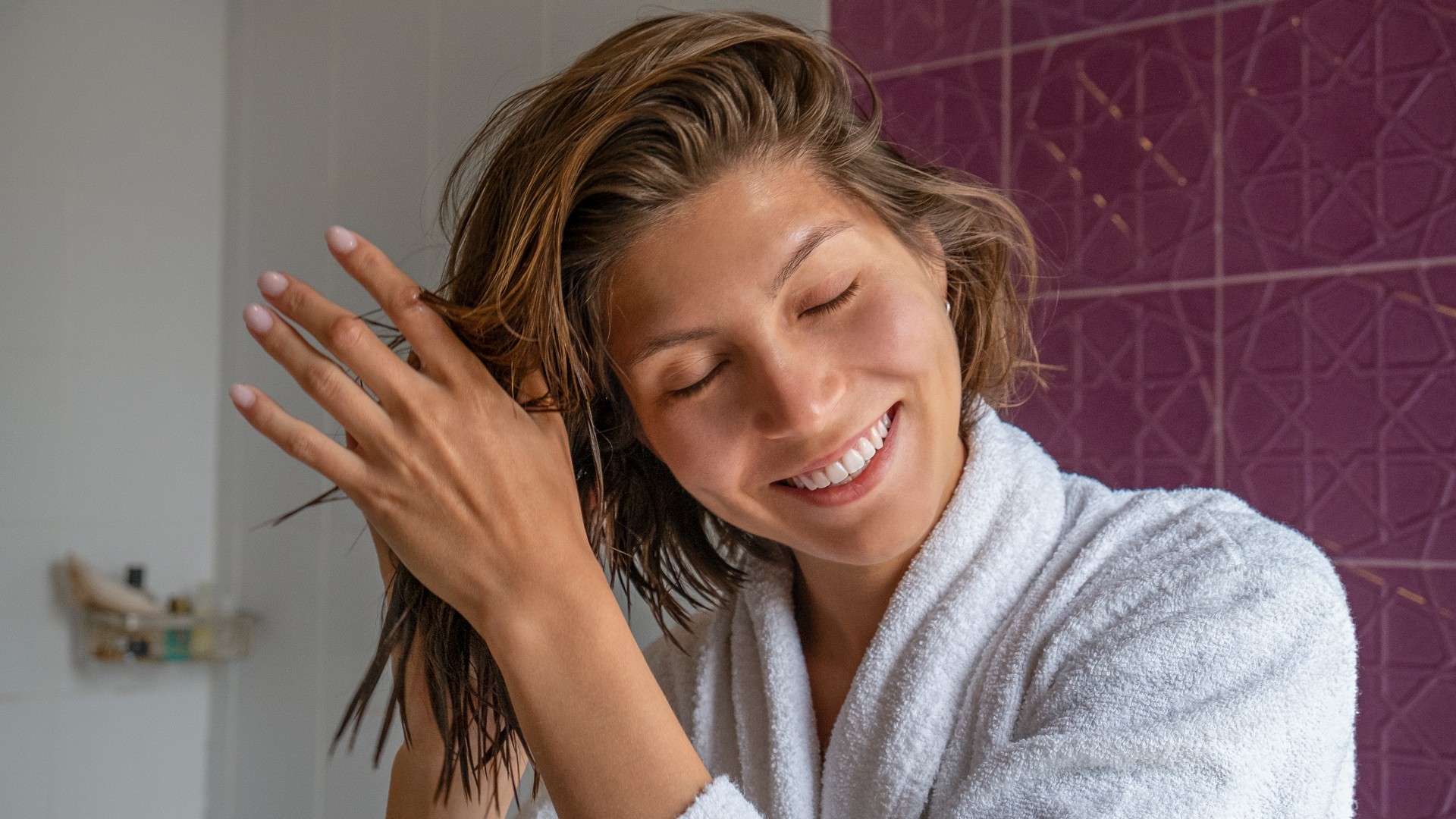
29. Spoon full of protein
Damaged hair lacks protein, generally through over processing the hair with colour or styling. This requires protein rich shampoos and conditioners, try the Resistance range by Kerastase. When the hair feels healthier, stop using the protein shampoo as it’s no longer required and can actually start to damage the hair with over use.
30. Bungee vs hair band
If you have thick hair or want to keep it up and in place all day, use a bungee band rather than a hair band when putting it up in a pony tail. You simply hook one end of the bungee into your hair with your other hand keeping the ponytail in place, wrap the bungee band round as many times as you can and then hook the other end.
It's one of those celebrity beauty secrets many swear by, as these bands as they don’t damage your tresses like some hair bands.
Care for hair with a pack of these bungee bands. The hook means less pressure and strain on your locks, preventing further hair damage when you want hair up and out of the way.
31. The tights trick
One of are more unusual tips for healthy hair. To get your hair super straight and silky, take an old pair of tights and cut a piece out that will pull over your head and knot the top. Before getting into bed, brush your hair with a paddle brush and pull the tights cap over, gently tucking in the ends. When you take your hair out the next day, your hair will be super smooth and sleek.
32. Watch out for your scarf
The hair at the back of your neck can easily become tangled in necklaces and snap, causing unsightly breakage, which is visible when you wear your hair up.
Hair technician and extensionist Jack Fitzpatrick explains that in the winter months wool scarfs can be behind similar damage: "Hair can become tangled in wool, whereas with silk, you can rub your hair and not cause damage."
So settle with a silk scarf or pay extra attention to your tresses when wrapped up in wool.
33. Be careful of your handbag
It's a near-daily occurence, when you spot or feel your locks tangled up in the handle of your shoulder handbag. However, some care is strongly advised when untangling - for the sake of one's mane.
Hair guru Jack Fitzpatrick adds: ‘When you put the strap of your handbag on your shoulder and trap your hair under the strap, be mindful to not just pull your hair out. You will cause fraying and break the hair you pull out.’
Video of the Week:
Parenting advice, hot topics, best buys and family finance tips delivered straight to your inbox.

Robyn is a freelance celebrity journalist with ten years experience in the industry. While studying for a degree in Media and Cultural Studies at London College of Communication, she did internships at Now and Heat magazines. After graduating, she landed a job at Star magazine, where she worked her way up to features editor. She then worked at Future as Deputy Celebrity Content Director across Woman, Woman’s Own, Woman’s Weekly and Woman & Home magazines.

